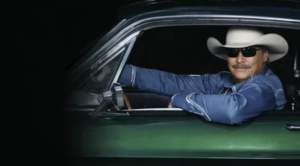
Alan Jackson’s “Gone Country”, a song that in 1994, captured a fascinating moment in country music’s ever-evolving landscape. Jackson, a stalwart of traditional country, offered a playful yet insightful commentary on the genre’s growing popularity and the artists who were flocking to its embrace.
Released as the third single from his acclaimed album Who I Am, “Gone Country” wasn’t just a catchy tune, it was a conversation starter. Written by the legendary Nashville songwriter Bob McDill, the song takes a lighthearted approach to a trend that some traditionalists viewed with suspicion.
Background
The lyrics paint a picture of a musical migration. We meet a lounge singer in Las Vegas, a folk rocker in Greenwich Village, and even a “serious composer schooled in voice and composition” – all facing career doldrums. But then, a beacon of hope emerges: country music. With a wink and a nudge, McDill sings, “They’re all hearin’ that same old song / Country music’s comin’ on strong.”
“Gone Country” wasn’t a scathing critique, but rather a good-natured observation. Jackson, known for his reverence for country’s rich history, wasn’t slamming newcomers. He understood the genre’s allure – its storytelling, its connection to everyday life, and its ability to resonate with audiences across demographics.
The song’s brilliance lies in its ability to be both playful and insightful. We hear the tongue-in-cheek descriptions of these struggling artists – the lounge singer sporting “rhinestones on his shirt,” the folk rocker trading his “banjo for a steel guitar.” But beneath the humor, there’s a subtle commentary on the ever-shifting sands of musical trends. Country music, once seen as a niche genre, was now attracting a wider audience, and established artists were taking notice.
“Gone Country” wasn’t without its critics. Some saw it as a sign of desperation, a watering down of country music’s core identity. However, the song’s enduring popularity suggests otherwise. It resonated with fans who appreciated Jackson’s honesty and his ability to celebrate tradition while acknowledging the genre’s dynamism.
Looking back, “Gone Country” serves as a time capsule, capturing a moment when country music was bursting onto the mainstream. It’s a song that reminds us that genres are fluid, that artists are constantly seeking new sounds and audiences, and that country music, at its core, is about connection and storytelling – qualities that transcend trends and generations. So, put on your favorite pair of boots, crank up the volume, and let “Gone Country” take you back to a time when country music was having a moment, and Alan Jackson was its wry and insightful observer.
Video